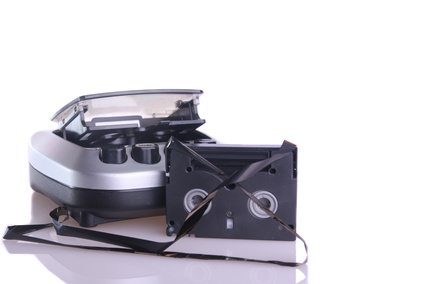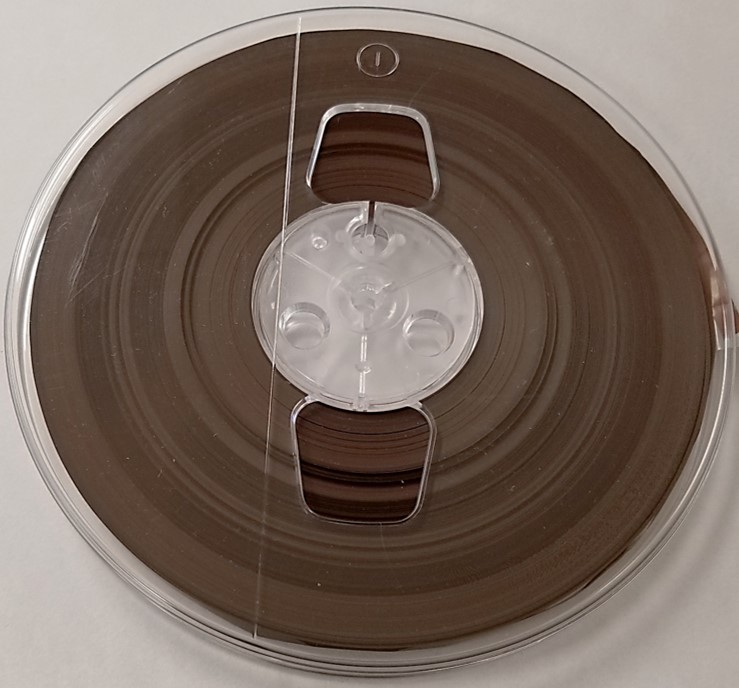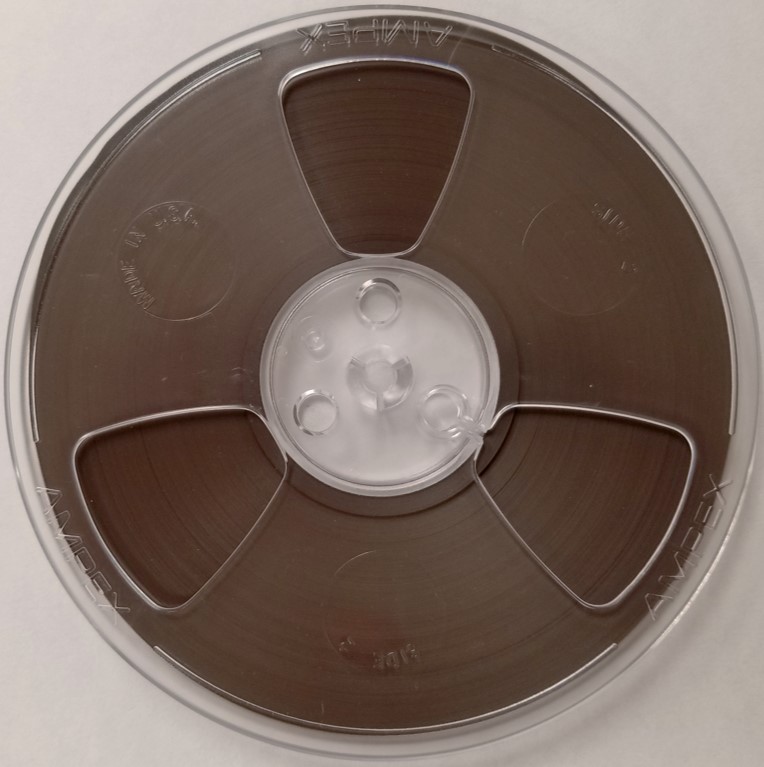VHS Tape Rewinder
The purpose of a VHS tape rewinder is obviously to rewind video tapes. These machines were popular in video rental stores and were used for the rewinding of VHS videotapes that were not rewound by customers after viewing the movie.
This equipment is not a record or playback device but simply a machine to perform the rewinding of the tape. Some believe that these VHS tape rewinder machines are essential in the preservation of videotape. However, this is not necessarily the case.

Physical Damage Caused by Poor Winding
One of the key elements in the proper storage of videotapes and other types of magnetic tapes such as audio, either in cassette or reel form, is proper winding. If a tape is wound properly prior to going into long term storage, then the tape will not deform, wrinkle, buckle, or suffer other types of similar physical damage. If this type of damage occurs to tapes, then the tapes will be very difficult to play properly or may not play at all without restoration.
Damaged tapes may also damage the playback equipment. Therefore, it is essential to wind tapes properly prior to placing them in storage. Prior to discussing the proper tape rewinding, it is important to look at tape winding problems.
Types of Poor Magnetic Tape Pack Winds
There are several ways that a tape either in cassette or reel format may be poorly wound. In reel format, these symptoms of poor tape winding are obvious. For cassettes, looking inside the cassette window is necessary, and so a little more effort is required to assess the tape pack wind properly.
Popped Strands
In this case, the strands of tape pop out of the main tape pack. This exposes the edges of tape to damage. The edges are important in the proper playing of the tape because of how the tape is guided in the equipment. This tape pack problem is usually caused by stops, starts, fast forwarding, and rewinding the tape during play. The following image of an audiotape reel illustrates many strands of tape protruding out of the main tape pack.

Flange Pack
This occurs when the tape is wound too loosely or the equipment is not properly aligned. This results in the edges of the tape resting or rubbing up against the flange of the reel or hub of the cassette. Ultimately, this can lead to damage to the edges of the tape and problems when the tape is played.
Windowed Tape Pack
When tape is wound too loosely, then gaps are created between strands of tape in the tape pack. This allows dirt and debris to enter between strands of tape, which then means a thorough cleaning is required before playing the tape. Failure to do so can damage the tape and the equipment. In addition, strands of tape can fold over onto themselves leading to the creasing or wrinkling of tape. Any tape surface that is not smooth will cause problems when playing the tape. This problem is caused when the tape is wound too loosely.
Spoked Tape Pack
This occurs when a tape is wound too tightly, either with a VHS tape rewinder or with the playback equipment. Over time, stress marks form, similar to radial spokes, in the tape pack wind, which can permanently deform the tape.
Proper Tape Winding
Many assume that a VHS tape rewinder, or similar devices for other tape formats, are required to wind tape properly. However, in most cases this is not true. The best wind for a tape occurs when the play mode of the equipment is used. The play mode provides the best winding tension for storage and produces a smooth tape pack without shifting and without strands of tape popping out of the tape pack. Therefore, it is best to play a tape completely to the end (without stopping) and leave it this way prior to placing the tape in storage. Of course, prior to winding a tape properly, the equipment should be clean and properly aligned.

The VHS Tape Rewinder
A VHS tape rewinder usually winds tapes at high speeds and like the fast forward or rewind modes in a VCR, produces a poor quality tape wind at the wrong tension for storage. Videotape rewinders are generally cheap devices and likely will do more harm than good to tapes. These types of devices are especially problematic with older tapes that are likely to be more fragile because of their age and because of possible deterioration. Therefore, for the most part, tape rewinders should be avoided.
Some higher end VHS tape rewinder models may be acceptable for rewinding tapes. These models provide the option to rewind tapes at speeds similar to the play mode in a VCR and thus will produce better winds. This is a better option than using high speed fast forward or rewind. In some type of equipment, this speed is referred to as “library wind” speed.
Rewinding Recommendations
Finally, previous recommendations suggested rewinding tapes in collections every 1 to 3 years in order to ensure the tapes do not suffer the problems caused by the poor tape winds mentioned above. However, if tapes are wound properly prior to going into storage and the storage temperature and relative humidity have been reasonably good, it is not necessary to rewind tapes every few years. In most situations, doing this will do more harm than good to the tapes.
In addition to proper wind tension, tapes in cassettes should be wound so that the tape is all on one hub before being stored. For reel tapes, the tape ends should be secured with non-residue hold down tapes so that the tape wind does not unravel.